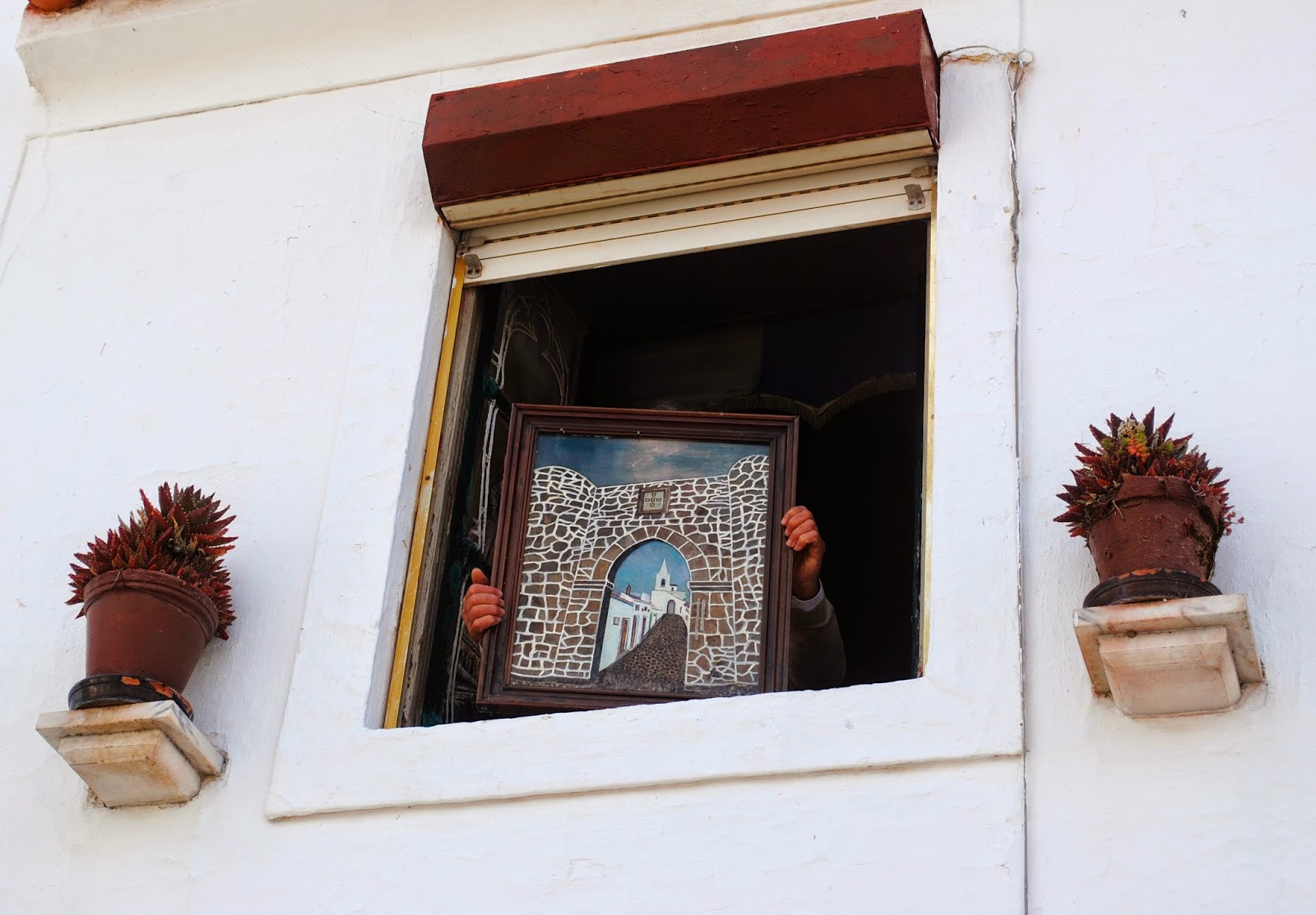It was back in september 2013. We were spending a WE in the lovely old town of Veere, a place full of inspiration. This is where I discovered the existence of the Churra Algarvia breed... And this is also where my attention got attracted by very pretty makelaartjes, on the façade of many buildings around (see below for three examples). So, we decided that this Dutch tradition was too nice not to be shared with our Alentejano friends. And we ended up, with the help of José, Thomas, Marie, Claire and Joaquim Inacio, with what is perhaps the prettiest Makelaar of the whole Alentejo (judge by yourself above)!
Now, since I knew that you would all be curious about makelaartjes, I decided to interview a reknown Leiden specialist, Mr. Tim Meijers. Here is what he wrote for us:
"The tradition of placing decorative Makelaartjes or something similar on rooftops is seen all around the world, but the variant as now seen at the Monte is especially common in Northern Europe.
They serve a dual purpose. One is architectural: makelaartjes connect the two sides of the roof. Although there is no consensus as to the exact origin of the word, "makelen" means in old Dutch 'to make' or 'to connect'. A ‘Makelaar’ is also a person mediating between house sellers and buyers - a real-estate agent. The other purpose of makelaartjes is spiritual and/or decorative. There is a huge diversity of patterns and shapes (see here for a great sample)
Different stories circulate about the origin of this practice. Some date back to pre-Christian times. One of the figures often represented in makelaartjes is the donderbezem (thunderbroom), which was believed to lead Thor, the Nordic and Germanic god of thunder, to protect the house from thunder and lightening. Later, other varieties developed.
In the Netherlands, like in the rest of Europe, makelaartjes are often found on farms and barns. Each part of the country has its own tradition. In Frisia, where makelaars are part of Uilenborden, they are often adorned by elegant swans on both sides. Different areas of Frisia use different sets of symbols: palm-branches for peace, tulips for hope, crescents for fertility, a harp (green if the farmer owned the farm, white if he leased it), cloverleaves for the trinity, and so on. There used to be a round hole (one can still recognize it in contemporary makelaartjes) in the middle of the board.
There are two stories about where the name ‘uilenbord’ comes from. Some say that the hole was used for light and ventilation, but that church-owls used it to enter the barn as well ("uil" means "owl" in Dutch, hence ‘owlboard’). Others say that the name comes from "ûle", which means "eye". The hole served to let in the ’eye of the day’ (see here). "uilebord" would mean in this case something like ‘windowboard’ rather than ‘owlboard’.
In Twente (Eastern Netherlands), makelaartjes often consisted of two horse heads (perhaps two donkey heads would fit for another of the buildings at the Monte...). This practice changed in the aftermath of the 80-years war. Some parts of land where controlled by the (catholic) Spanish, while others where controlled by the (protestant) Dutch Republic. This resulted in religious pluralism, which subsisted even after the entire area fell in Dutch hands. Oppressed catholic farmers then used their rooftop decoration as a way of expressing their identity. A prominent symbol became, of course, the cross (see below for a Veere example), together with other Christian symbols (heart, half-moon, anchor, etc.). It is said that traveling priests (disguised as sales people) providing illegal religious services used this to find out where their presence would be welcomed. Perhaps in the future, threatened pomegranate consumers (dressed up as birdwatchers) will find their way in the Alentejo in the same manner... Protestant farmers responded by making changes to their makelaartjes too, developing their own style. Observing makelaars can still help us finding out today which areas were predominantly catholic or protestant.
Note that windmills sometimes have makelaartjes too (here in Leiden). Interestingly enough, their purpose is specific. When the direction of the wind changes, the wind blows past the makelaar, making a whistling sound. This way the miller knows he has to turn the wings of the mill to face the wind."






























